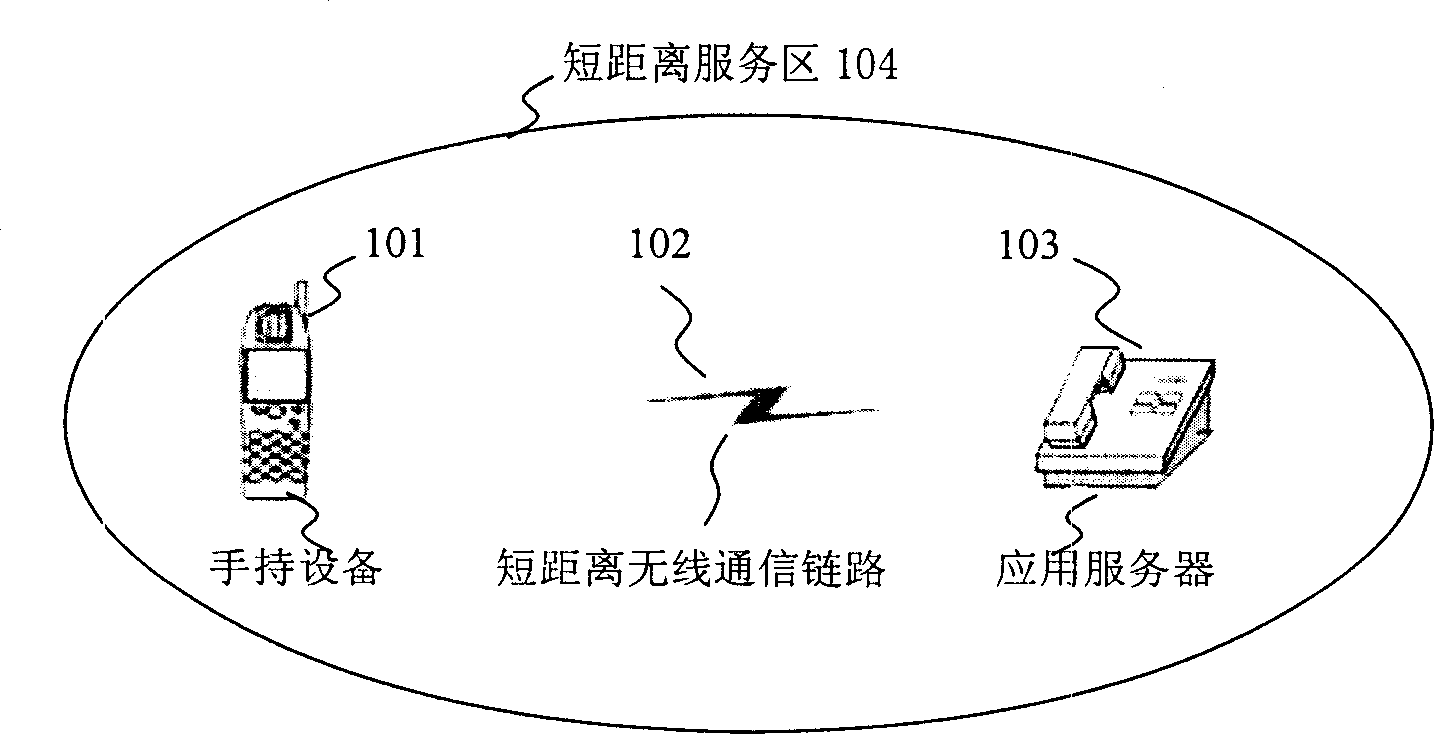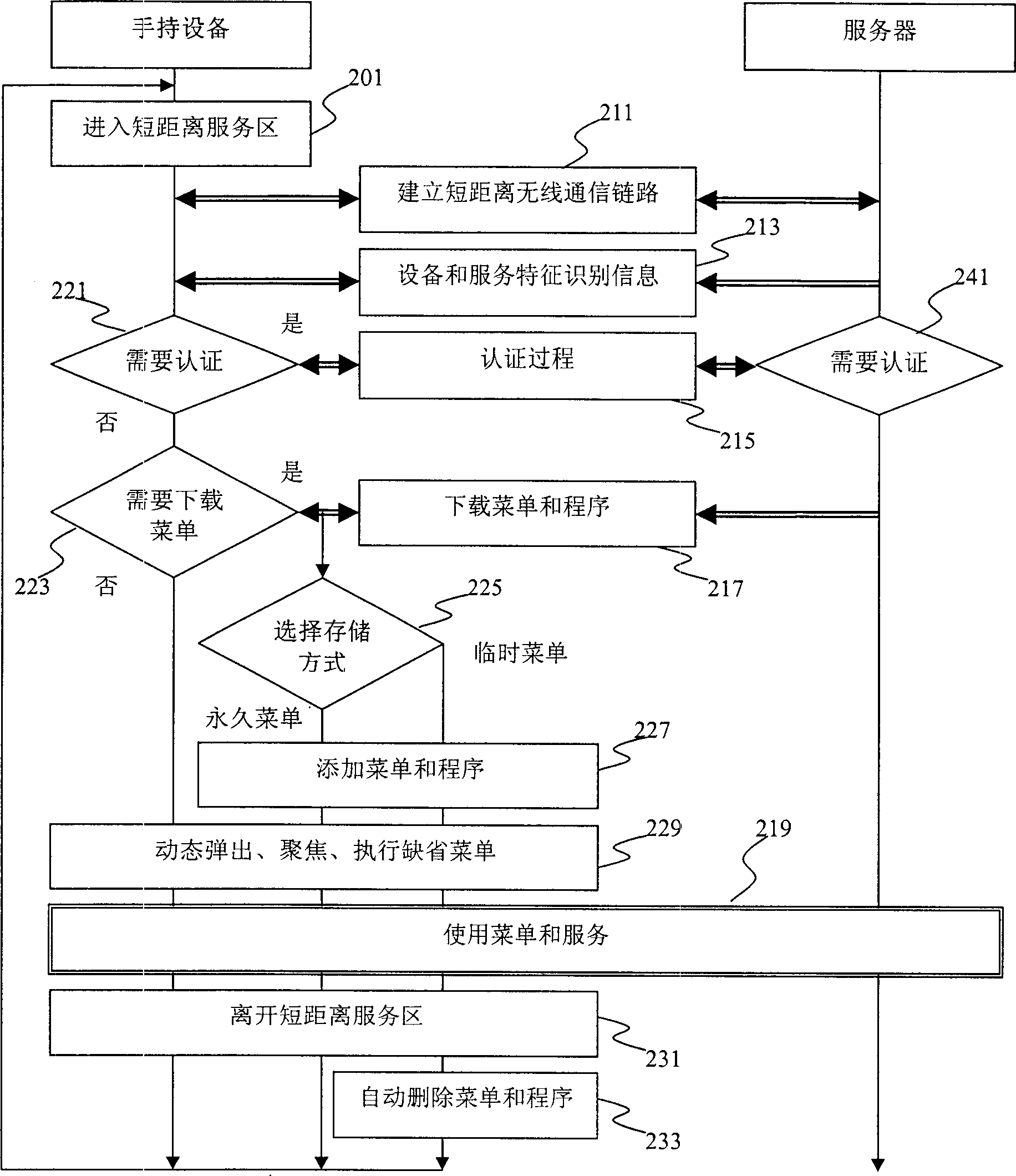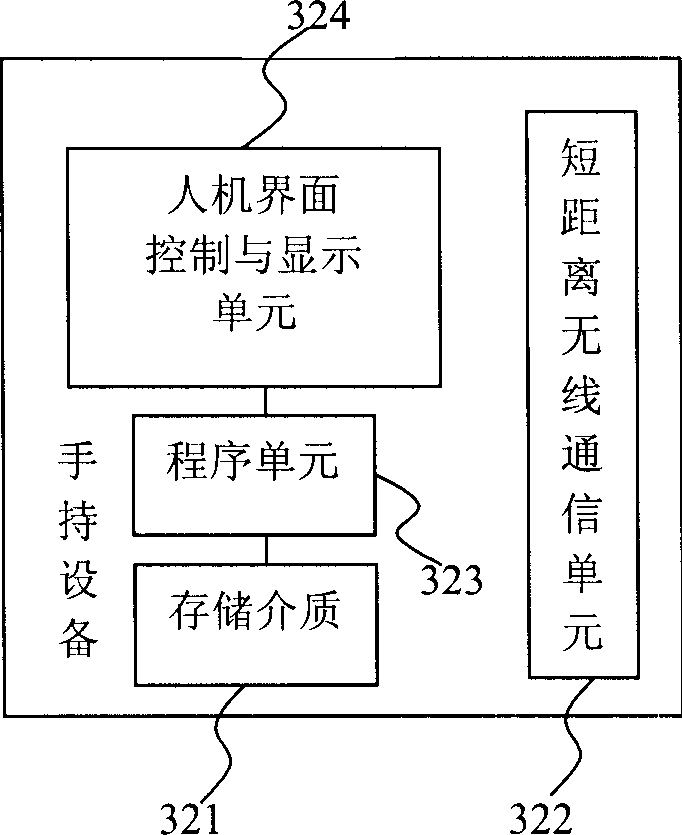Method for realizing dynamic menu update of hand-held apparatus by short-distance wireless communication
A short-range wireless, handheld device technology, applied in telephone communication, branch equipment, communication between multiple stations, etc., can solve the problems of cumbersome buttons, inconvenient, limited service menus and applications, etc., to expand the scope of services , easy to use, solve the complex effects of payment and control operations
- Summary
- Abstract
- Description
- Claims
- Application Information
AI Technical Summary
Problems solved by technology
Method used
Image
Examples
Embodiment Construction
[0030] See figure 1 , figure 2 , image 3 with Figure 4 : Working system: see figure 1 , The present invention includes:
[0031] A handheld device 101 refers to any device including a mobile phone, a PDA, a palmtop computer, a smart phone, or other handheld devices, and menus and programs can be dynamically added or deleted;
[0032] A short-range wireless communication link 102 refers to a communication link established by any of infrared, Bluetooth, HomeRF, UWB, WLAN, PAN or other short-range wireless communication protocols, and the communication range is limited to 0-10m Or within the range of 0-100m;
[0033] A server device 103 that provides services in the short-distance area 104, stores the menus and programs needed for the handheld device to operate the service, and can provide advertising, shopping, ticket purchase, mall POS, electronic device control and other services in the short-distance area ;
[0034] In the short-range area 104, the handheld device 101 and the...
PUM
 Login to View More
Login to View More Abstract
Description
Claims
Application Information
 Login to View More
Login to View More - R&D
- Intellectual Property
- Life Sciences
- Materials
- Tech Scout
- Unparalleled Data Quality
- Higher Quality Content
- 60% Fewer Hallucinations
Browse by: Latest US Patents, China's latest patents, Technical Efficacy Thesaurus, Application Domain, Technology Topic, Popular Technical Reports.
© 2025 PatSnap. All rights reserved.Legal|Privacy policy|Modern Slavery Act Transparency Statement|Sitemap|About US| Contact US: help@patsnap.com



